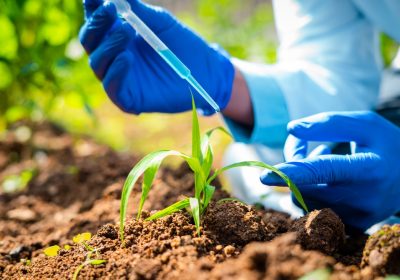How government agencies meant to protect the public are utterly failing to keep our food safe and contaminant-free. Action Alert!
Listen to the audio version of this article:
THE TOPLINE
- Two new reports add to growing concerns about the safety of our food supply.
- One found that 20 percent of 59 different fruits and vegetables posed significant risk due to pesticide residues; another report details how the EPA is poised to allow 10 times more acephate, a toxic organophosphate pesticide linked to autism and hyperactivity, to be applied to food.
- We can only make informed choices if we have information, but the FDA is dragging its feet in updating its safety survey of the food supply called the Total Diet Study.
In our busy lives, it’s hard to always eat fresh, healthy foods. When we take the time to cook meals with lots of fruits and veggies, we want it to be good for us and our families. But government policies allow dangerous levels of toxic pesticides and herbicides to be sprayed on our food. This means that, even as we strive to make an investment in our health, that investment is compromised because of our exposure to dangerous chemicals. We need our regulators and lawmakers to do better.
Recently, an analysis of 59 common fruits and vegetables using USDA data found that 20 percent of these foods posed a significant risk due to the presence of pesticides. Problematic foods included bell peppers, blueberries, green beans, potatoes, and strawberries. Organic samples fared far better—the only food that showed significant contamination was imported organic green beans, another reminder to buy organic whenever possible!

Industry groups argue that 99 percent of the foods tested by the USDA contain pesticide residues at or below the EPA’s legal limit. Yet the limits set by the EPA are deeply flawed. As we’ve pointed out elsewhere, the EPA’s system for regulating pesticides, as well as other chemicals, is far too lax and relies almost exclusively on industry data.
For example, to register a pesticide, companies must only be able to show that using the pesticide according to specifications “will not generally cause unreasonable adverse effects on the environment,” which, in the agency’s definition, includes human health.
The problem is that this approach does not even begin to take into account the sum total of all the various pesticide and other environmental exposures—what can be referred to as our total toxin load. There may not be a “smoking gun” when the EPA evaluates the data industry has chosen to share on a pesticide, but pesticide residues on our food, along with PFAS and other chemicals, added to the particulate matter you inhale while in traffic, to the microplastics in the air at your office, the heavy metals and endocrine disrupters in your drinking water, the phthalates in cosmetics, all the way to the radiation from your cellphone— all of these exposures can add up and make us more susceptible to disease.
Yet in many cases, we don’t need an examination of total toxin load to prove that pesticides are dangerous. A 2023 review article in the journal Environmental Health linked pesticides to increased risks of cancer, diabetes, and cardiovascular disease. Studies of farmworkers and their families provide an even grimmer picture, linking on-the-job exposures to higher risk of Parkinson’s disease, breast cancer, diabetes, and more.

Over the years, we’ve documented many of the negative health effects linked to various pesticides like paraquat, glyphosate, and neonicotinoids.
Another recent report from ProPublica adds additional concerns. Acephate, a toxic bug-killer applied to celery, tomatoes, Brussels sprouts, and other fruits and vegetables, is linked with autism, hyperactivity, and reduced scores on intelligence tests in children. The European Union banned acephate more than 20 years ago. And what does the EPA do? “More, please!”
The EPA recently proposed easing restrictions on acephate that will allow 10 times more of this chemical on food than is acceptable under current restrictions. The agency’s assessment is informed mainly by a new type of testing that uses disembodies cells rather than whole lab animals to assess risk. Using the new tests, the EPA says it found “little to no evidence” that acephate and a chemical created when it breaks down in the body harm the developing brain.
The EPA is moving ahead despite warnings from its scientific advisors who warn that the tests may not be representative of many processes and mechanisms that could” harm the developing nervous system. A second group of advisors, the Children’s Health Protection Advisory Committee, also warned against using the tests to raise the amount of acephate that can be on food. Veena Singla, a member of the children’s committee, said “It’s exactly what we recommended against…It’s disappointing they’re not following the science.”
It would be easier for us to follow the science and make informed decisions if we had more data, but the government has been dragging its feet with that too. The FDA uses the Total Diet Study (TDS) to analyze the US food supply for safety, but has yet to issue an update since its 2018-2020 report. Perhaps the agency is afraid of looking too closely at our pesticide and PFAS contaminated food.
We must demand more accountability and more action to protect public health from new-to-nature chemicals.
Action Alert! Write to Congress and urge them to do a better job protecting our food supply from toxins, and also include an ask for the most recent Total Diet Study data! Please send your message immediately.





The TDS still doesn’t have an update on pesticides but does on the other items it measured. Why is it taking so long? Also, why look at just strontium and cesium- wouldn’t it be useful to look at aluminum and mercury content?